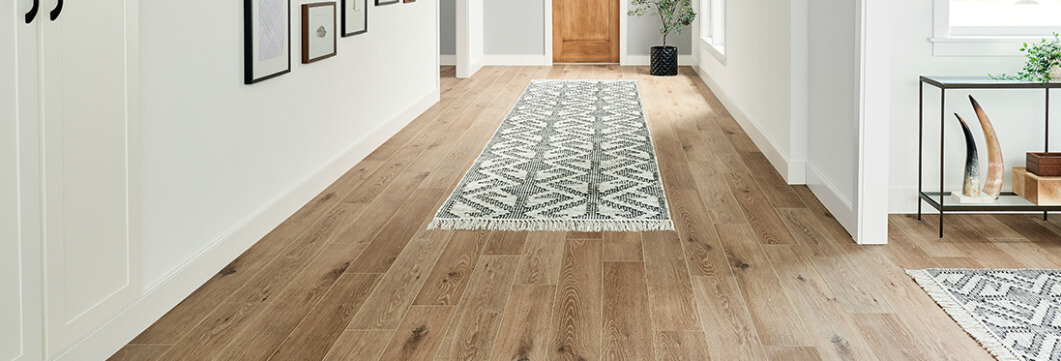There are many reasons vinyl plank flooring is such a popular choice for new homeowners, renovations, and more: easy to clean and sleek. This type of flooring takes on many looks, depending on the designer’s preference. But bubbling vinyl plank flooring can happen, and it is one of the most common complaints amongst those who choose this type of floor. The good news is users can learn why it happens and, most importantly, how to stop your vinyl plank flooring from buckling in the first place.
Vinyl floor bubbling can occur for many reasons, and it doesn’t matter if your flooring is laid down via click-together, loose lay, or glue-down methods. Understanding how this happens can help prevent it, even if much of the time bubbling results from nothing more than atmosphere and elements.
Natural causes like sunlight and heat are one major reason for bubbling vinyl flooring. As the material warms (and cools), it can expand and contract, widen and shrink, and that constant changing of size can lead to buckling. Of course, this is more common in spaces right by windows or in rooms that experience greater variance in temperature throughout the day.
Spills and moisture can be one other reason vinyl floors bubble…
Spills and moisture can be one other reason vinyl floors bubble. When the planks get wet, the adhesive may weaken, meaning the flooring could buckle more easily. Thus, if using vinyl plank flooring in rooms like the kitchen or the bathroom, it’s key to use a waterproof adhesive.
Despite these possibilities, there are ways to plan ahead to assure vinyl floor bubbling is less likely to occur. As these planks may expand and contract, it’s important to not cover the entire floor with them. Leave a quarter of an inch or so of the perimeter around where you lay the planks so that there is room for the vinyl to breathe. Get too close to the wall, and bubbling will be more likely as planks will have nowhere to go.
Using the correct adhesive is also another way to stop your vinyl plank flooring from buckling. For glue-down planks, use high-quality adhesives. Cheaper ones may wear out sooner, but more vital than that is paying attention to the instructions. There is a certain amount of time needed to secure a bond between base and plank, and that must be followed to a tee.
Other ways to mend vinyl can be more detrimental than helpful…
Other ways to mend vinyl can be more detrimental than helpful. Bubbles can be removed via puncturing or cutting, but it can cause some ugly marks or scars. As such, it’s better to take precautions ahead of time and not wait to make fast fixes. This includes — especially in rooms with more volatile heating — applying a UV film or glass tint to windows to lessen heat that comes in. Curtains, too, can help. And the good news is these planks are secure but never permanent. This means you can always undo a mistake or mend bubbling. Simply peel back the plank, scrape away adhesive that has failed, and redo it.
Vinyl floors are a popular choice in homes, and laying them down takes practice and precision. AC South Flooring can help with the installation and care of vinyl plank flooring, working one-on-one with clients to ensure the chosen materials have been professionally adhered to. Get in touch to learn more!
